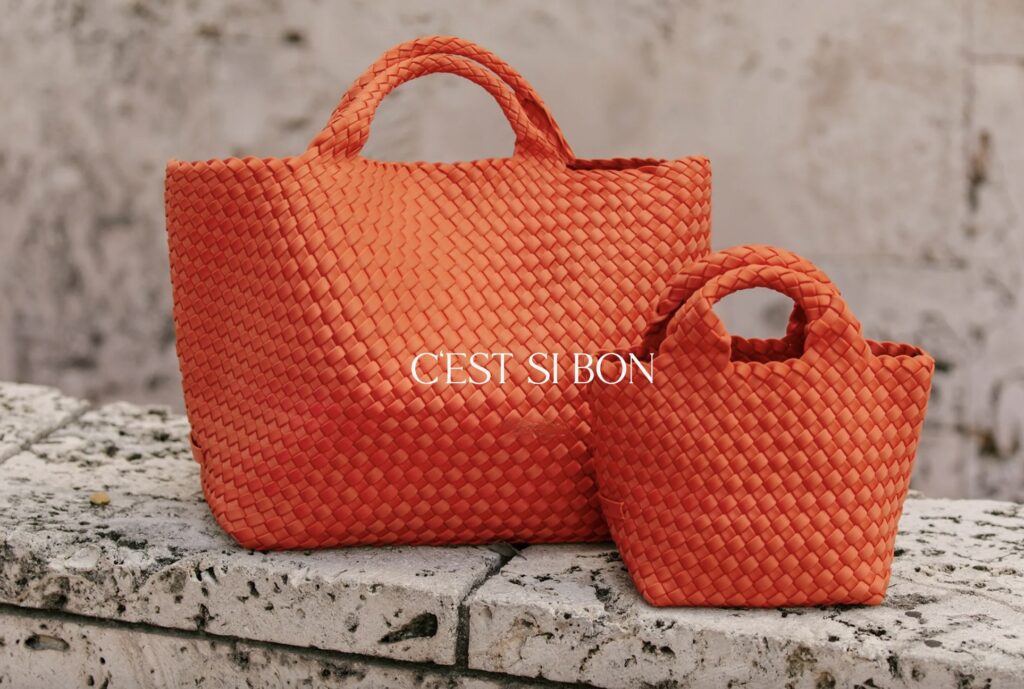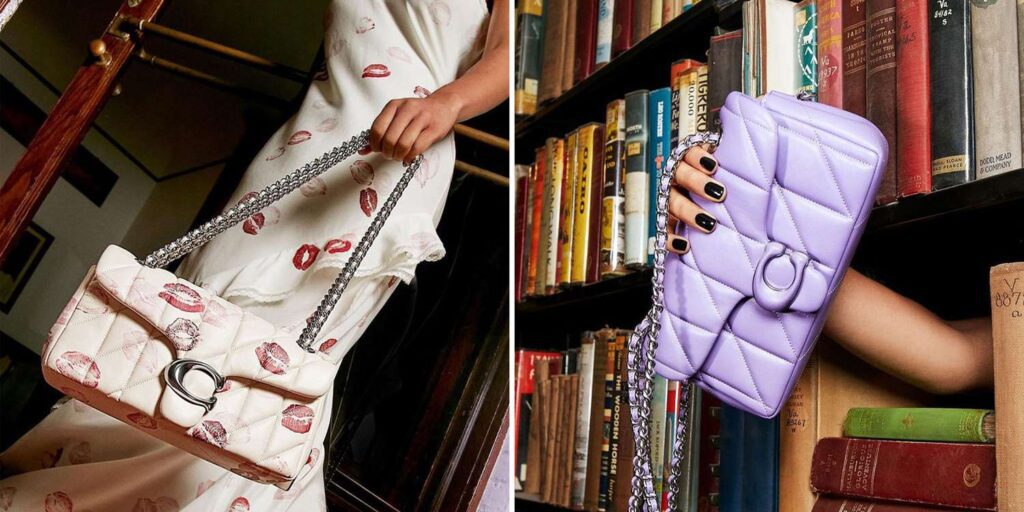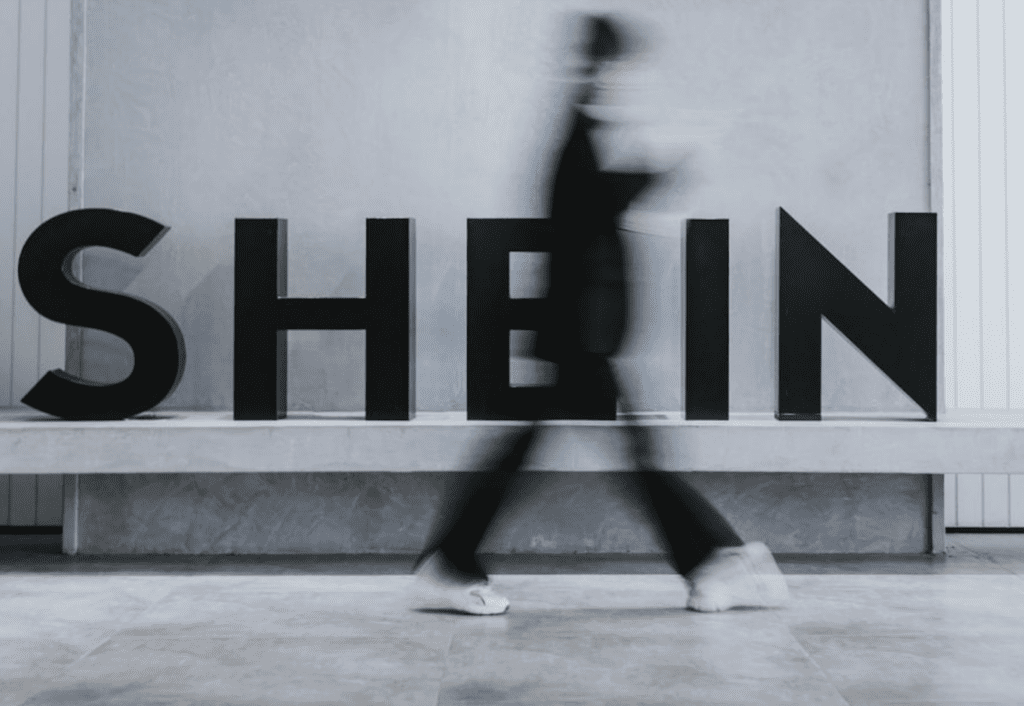The brand behind an increasingly popular collection of woven handbags and clutches is looking to register its interlaced weaving pattern as a trademark – albeit not without some pushback from the U.S. Patent and Trademark Office. In a newly-issued Office action, an examining attorney for the USPTO preliminarily refused to register NAGHEDI’s woven mark on the basis that the “configuration of slim, uniformly-sized straps of neoprene interlaced, folded and woven to form a repeating weave pattern covering the surface of the goods, or a portion of the surface of the goods” for use on bags amounts to a “nondistinctive repeating pattern.”
In the April 10 Office action, as first reported by TFL, a USPTO examiner refused registration for NAGHEDI’s woven pattern, stating that “the applied-for mark, as used on the specimen of record” (screenshots of woven bags from NAGHEDI’s e-commerce site) “is merely an ornamental and/or nondistinctive feature of the goods,” and thus, it “does not function as a trademark to indicate the source of applicant’s goods and to identify and distinguish them from others.” In particular, the applied-for mark “consists of a repeating weave pattern of rectangles … applied over a substantial portion of the surface of the [bags],” according to the examiner, who notes that “the ornamental nature of a given pattern or design is enhanced where the design is repeated over the entire surface of the product or packaging.”
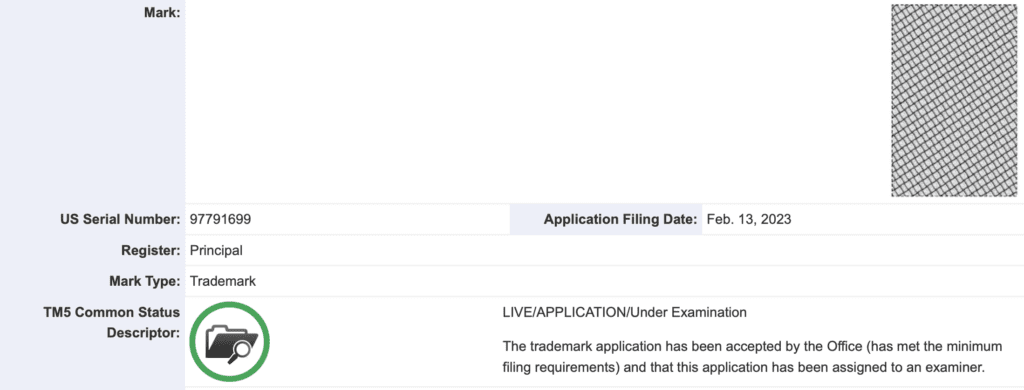
Continuing on, the examiner asserts that “the applied-for mark would be perceived merely as an ornamental and/or nondistinctive feature of the goods because highly similar if not the same patterns are commonly used on the same or similar goods.” As for what those other goods are, the examiner points to examples of woven handbags being sold by brands like Bottega Veneta, Sol and Selene, and Clare V., as well as lookalike bags that are available from third-party sellers on Amazon.
In other words, because consumers are “accustomed to seeing similar ornamental and/or nondistinctive designs and/or patterns on these and other similar types of goods, they will not perceive the applied-for mark as indicating the source of the goods, but rather as a mere ornamental and/or nondistinctive feature of the goods,” the examiner argues, stating that with the foregoing in mind, “the applied-for mark appears incapable of functioning as a source-identifier for applicant’s goods.”
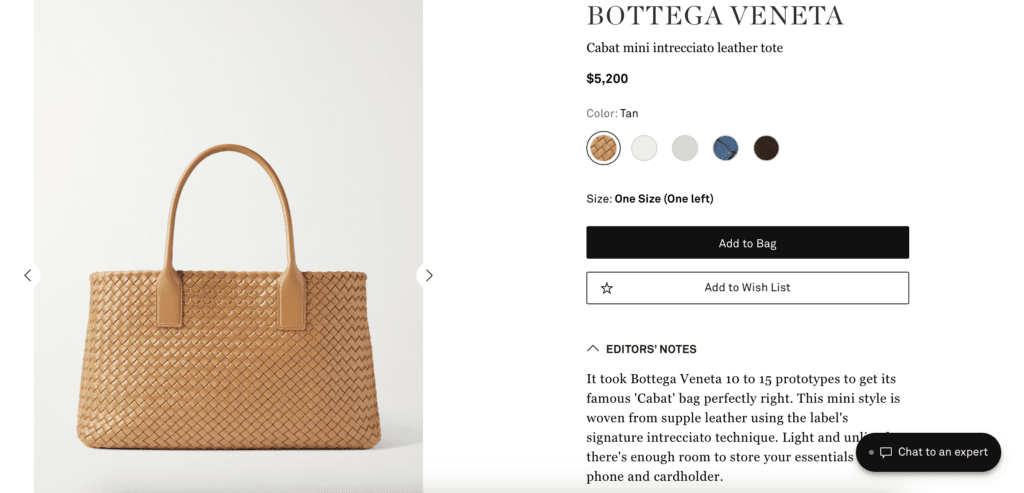
(The examiner also takes issue with NAGHEDI’s swatch drawing, the identification of the goods at issue, and the mark description, stating with regard to the latter that the applicant “must submit an amended description of the mark because the current one uses broad, vague language that does not accurately describe the mark,” and proposing the following: “The mark consists of a repeating pattern comprised of slim, uniformly-sized rectangular straps of neoprene interlaced, folded and woven to form a repeating weave pattern comprised of diagonal rows, with all of the foregoing covering the surface of the goods.”)
What About Bottega?
The USPTO’s pushback against NAGHEDI’s application is interesting in part because of Bottega Veneta and the intrecciato weave that it began using in 1975. The trademark office previously refused to register Bottega Veneta’s mark for use on bags on the grounds that it is both aesthetically functional and ornamental. While the Kering-owned brand was able to overcome the refusal, prompting the USPTO to issue a registration for its woven pattern for use on various types of bags in 2014, the pushback against NAGHEDI’s application could raise questions about the strength of Bottega’s registration. After all, the examining attorney here suggests that woven patterns, such as NAGHEDI’s, are so “commonly used” on handbags that consumers are more likely to view them as ornamental aspects of handbags than as indicators of source.
Bottega Veneta becomes a relevant player here, as the examining attorney points to its woven pattern as among the “highly similar if not the same patterns” that appear on handbags, suggesting that Bottega’s weave also may not serve as an indicator of source.
As TFL previously reported, the strength of Bottega Veneta’s registered intrecciato trademark is not necessarily very obvious, in part because we have not seen the mark challenged in connection with litigation, for example. In fact, Bottega does not appear to aggressively enforce its rights in the mark by way of infringement lawsuits in the U.S., despite potential infringements coming by way of handbags from other brands and a huge array of Amazon and Etsy sellers.
The brand has filed trademark suits against counterfeit sellers and Alibaba, alike, in the past, but it does not appear to be in the business of filing regular enforcement-centric lawsuits in the U.S. like many of its peers do, which could potentially provide infringers an opportunity to argue against the strength of Bottega’s mark if faced with litigation.




